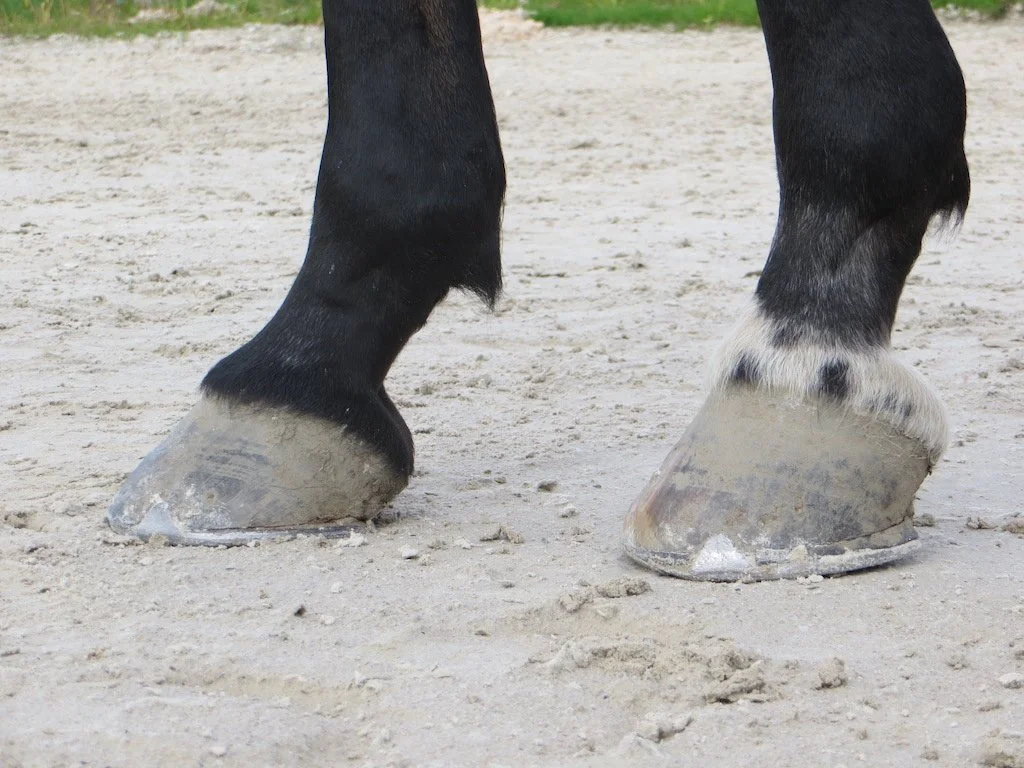Is your horse at risk for injury?
You don't have to be around horses for long to know that injuries, especially those of the lower leg, are incredibly common. Often, they seem to come »out of nowhere«. The horse is working fine one day and the next he hobbles out of his stall for no apparent reason. The thing with these »out of nowhere« injuries is that usually they don't come out of nowhere at all. More often than not, there will be clues that we might be heading towards an injury, we just need to become better at recognizing what those clues are.
First of all, we need to realise that the delicate structures of the lower limb do not work in isolation. They are a part of the myofascial system and work as a part of a soft tissue team. Tendons are really just parts of muscles and muscles are just parts of muscles chains. And all of that is connected by fascia, acting in functional lines that connect one body part to another. It is all connected. So, the health of the fascia higher up will affect the health of the soft tissue structures lower down. And vice versa.
One way to know if the function of the lower limb soft tissue structures might be compromised, is to look at the functionality of the body as a whole. Dysfunction anywhere in the body puts the horse at risk of injury. Here are some red flags to look out for:
1.
Your horse's neck is unevenly developed. You can see a little bulge just behind the poll, overdevelopment of the brachiocephalicus (the lower neck muscle), maybe a little dip in front of the withers. His shoulder muscles seem to be really strong, while there is a lack of muscling in the middle of the neck. This indicates the horse is not using his thoracic sling correctly, putting too much strain on his front legs
An unevenly developed neck is often a sign of thoracic sling dysfunction.
2.
His back is sensitive. He doesn't seem to appreciate being brushed over his back and the muscles of his topline just don't seem to be developing at all, despite regular work. This indicates that he is using his back muscles to brace, which reduces the spinal range of motion. A reduced range of motion of the spine means the legs will have to make up for it.
Objections to being brushed over the back or to being saddled, should always be taken seriously.
3.
It is getting very difficult to engage the hind end. It sometimes feels like the horse has no idea where his hind legs are or how to correctly activate them. He might be lacking impulsion or might be having difficulties clearing jumps. He might even seem to be dragging his toes from time to time. This can indicate several things, from a reduced range of motion of the spine, to hip flexor and ventral line issues, to impaired proprioception due to nerve compression. Whatever the initial cause, it is a big red flag.
4.
You can't seem to get those hooves balanced. Try as he might, your hoof care provider can't seem to get rid of those underrun heels and long toes. Or the medio-lateral imbalance. Or both. The hooves always adapt to what's going on higher up. If your horse's body isn't balanced, his hooves won't be either. And if the foot is not functioning as it should and not providing the shock absorption that it was meant to, guess what structures are going to be taking the extra load. That's right, the soft tissue structures of the lower limb.
Hoof imbalance will always compromise lower limb function.
This is by no means an exhaustive list, but it is a place to start. Make a habit of observing your horse, his posture and the way he uses his body. You just might be able to prevent an injury if you pay attention to the clues.



